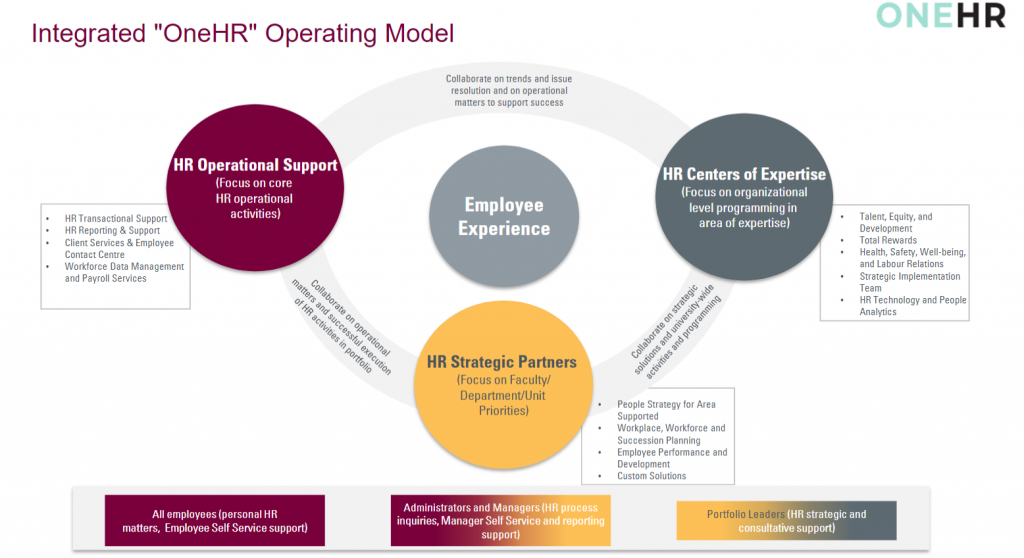Implemented a new Operating Model for HR
What did we do?
Administrative support units must operate in a structure that delivers coordinated services, administrative effectiveness, and operational excellence, while also ensuring value for money. Recognizing the need for coordinated decentralization, the same concepts applied to create the IT governance model were used to create the HR Governance Model.
Outcome – Coordination and Alignment of HR Projects, Priorities and Structures
The President and Vice-President (PVP) group approved a new internal HR Governance structure, intended to enable stronger integration, planning and coordination of HR service delivery. HR Governance fosters partnerships between University and Human Resources in support of McMaster’s vision, institutional priorities, and strategic framework.
This new framework has been key to decision making, alignment and information sharing. It supports the University’s mission by building shared understanding on specific and broader community HR issues and enables an integrated approach to collaboration on and align HR strategy and operations with University’s overall objectives.
The current HR Governance includes the PVP group as the HR Executive; the HR Working Group including administrative leaders from across the University; and the planned HR Innovators Council as expected to enable employee voices. Together these groups help set strategic direction, monitor progress and outcomes, and provide critical input into HR priorities, programs, and processes. Further evolution of the governance model is expected.
What did we do?
The HR Review recommended changes regarding the organization design and delivery of HR services in payroll, benefits and HR advisory services. It also highlighted the need to build expert teams, and the importance of ensuring leaders in Faculties and departments have access to expert HR support. In a highly decentralized environment, it is critical that the HR operating model for McMaster University is well-integrated and coordinated to achieve process efficiency and enable an exceptional employee experience.
Understanding these opportunities, a new Operating Model for HR was approved by PVP in Fall 2020 and has been used to redesign how HR services are delivered at McMaster. Efficiency can be achieved in a coordinated model which permits streamlined processes, well defined roles and hand-offs between levels of supports.

Outcome – Decentralized Coordination, Operational Excellence; Process and Administrative Efficiency; OneHR
The new OneHR Operating Model has four integrated components.
- HR Self-Service enables employees and managers to review/update personal information, complete core transactions and search for general HR information.
- HR Operations provides employees and managers with consistent general HR support and answering operational HR inquiries or escalated matters requiring attention.
- Embedded HR Partners support senior leaders and administrators in faculties/departments to provide customized HR strategic advice and internal enhancements to HR processes and operational matters. This partnership is enabling restructuring and realignment of work to embedded HR roles, achieving efficiencies, reducing errors, and helping to support area goals.
- Re-alignment of HR Centres of Expertise (CoE) supporting Health, Safety, Wellbeing and Employee Relations; Compensation, Pension and Benefits; and Talent Equity and Development to provide oversight over policies, collective agreements, and act as the key driver of HR organizational level programing such as leadership development, talent and equity strategies, and employee health, safety, and wellness.

Almost every HR role has been redefined as we work to ensure partnership, information sharing and integration of services.
